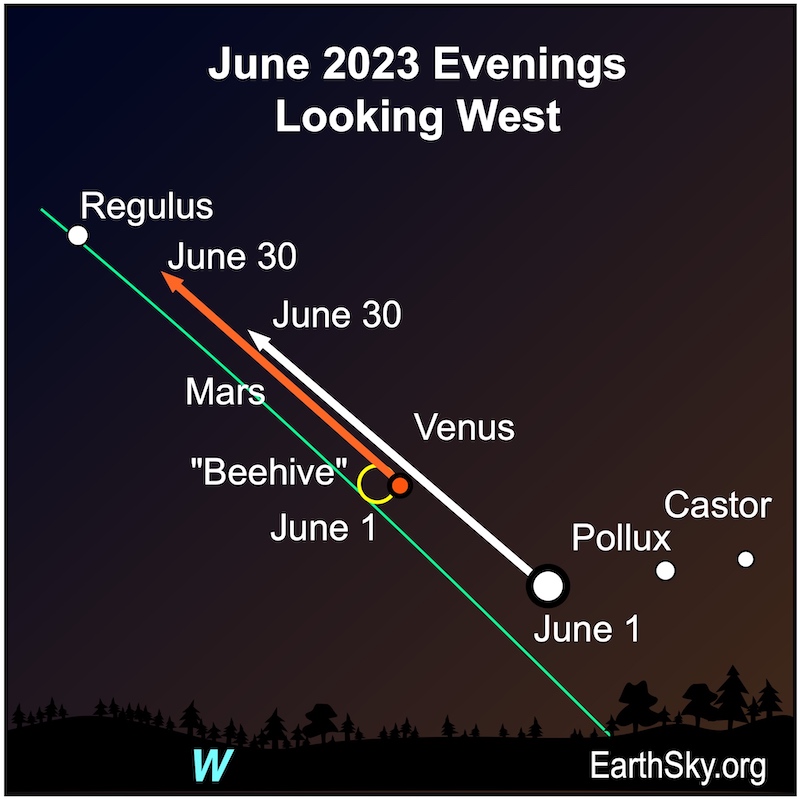Hey Space Placers,

In June, Venus, the brightest planet, will continue to dominate the western sky after sunset and move away from the Twin Stars of Gemini, Pollux and Castor. Venus will reach greatest elongation – 45 degrees – from the sun on June 4th. Mars, nearby, continues to fade in brightness as we race away from it in our orbit around the sun. Don’t miss Mars buzzing through the Beehive star cluster on June 1 and 2, 2023. Then, Venus buzzes by the Beehive on the evenings of June 12 and 13. Later in the month, the moon will sweep past these 2 inner planets on June 21 and 22. The white arrow shows Venus’ position along the ecliptic – or path of the sun, moon and planets (shown as a green line on our chart) – for the month of June, with the red arrow showing Mars’ path. Note how Venus and Mars get closer together over the month. On June 1st, the planets appear 10 degrees apart, and by month’s end they appear less than 4 degrees apart. Both planets are moving toward Regulus in Leo the Lion. Venus and Mars will set around midnight (your local time) at the beginning of June and around 11 p.m. at month’s end. Check out our video about Venus and Mars. Chart via John Jardine Goss/ EarthSky.
Neat doings in the sky tonight.
Binoculars and a telescope will provide a nifty view. You can also use your camera to try for an image.
I'm hoping to see and image this event tonight. I'll be using my Unistellar telescope
You'll need a good, clear view to the West - good luck!
Sky Guy in VA
No comments:
Post a Comment